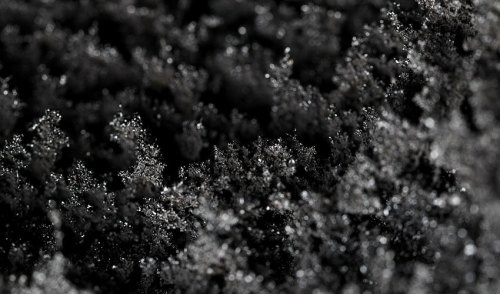
What Is Sooty Mold and How Do I Get Rid of It?
Sooty mold sounds like a problem that might afflict a fireplace, furnace or chimney, but it is actually a common fungus on trees, shrubs and flowers. This black or dark gray coating does little harm to the plant but it is unsightly and distracting, dampening the beauty of your landscape. Fortunately, it is easy to get rid of.
About Sooty Mold
Sooty mold is a dark gray or blackish powdery coating on plant foliage, fruits or even nearby structures such as fences, sheds, furniture, stones and decorative items. Several types of fungus are part of the sooty mold family, including ascomycete, capnodium and saprophytic fungi, but the fungus itself is not the culprit behind sooty mold. Instead, this mold and fungus grows where there are heavy deposits of sugary waste products, the sweetly-named "honeydew" excreted by insects such as aphids, scales, whiteflies and mealybugs. Sooty mold can also develop on injured plants that are exuding large quantities of sap from wounds and punctures.
Plants Affected by Sooty Mold
A wide range of plants can be affected by sooty mold. While this fungus doesn't dramatically affect plants – because it is feeding on a waste product on the plants, not harming the plants themselves – it can dampen photosynthesis and slow or stunt plant growth. The dull covering can make ornamental plants less attractive, and sooty mold can also trigger outdoor allergies.
A wide range of trees, shrubs and flowers can be subject to sooty mold, including…
- Azalea
- Camellia
- Citrus trees
- Crape myrtle
- Elm
- Fig
- Gardenia
- Laurel
- Linden
- Oleander
- Pecan
- Pine
- Rose
In addition to these susceptible plants, any plants arranged underneath or close to vulnerable plants may also show signs of sooty mold as the honeydew from insects drips onto adjacent plants and the fungus grows.
Treating Sooty Mold
To effectively get rid of sooty mold, the insects that leave behind the honeydew waste that fosters the mold must be treated. Sprays of horticultural oil, neem oil or insecticidal soap can be helpful, but the infected plants must be thoroughly covered to prevent the insects from recurring – be sure to spray the undersides of leaves and to treat all the foliage to be effective. Washing structures or rinsing off plants can also help remove the mold as well as dilute the sugary wastes that foster the mold's growth. A weak dish soap solution can remove the mold from structures, furniture, patio umbrellas and other gear and will also help inhibit more insects.
Patience is essential when treating sooty mold. It can take significant time for the mold to grow noticeable, meaning that insect infestations may be quite significant by the time the mold is strongly visible. It may take several treatments to thoroughly inhibit insect populations and remove the sooty mold, restoring plants to their former beauty. Preventative treatments should then be initiated to be sure the insects don't return and the mold doesn't regrow.
In time, despite how unattractive sooty mold can be, it's easy to remove this fungus and keep your plants protected so they always look their best.
